[Retracted] A Study of English Reading Modality Recognition and Practice Based on Intelligent Sensor Networks
Abstract
Intelligent sensor networks are a current hot topic in the field of communication and are widely used in subject education, quality education, and home security monitoring. In today’s world of increasingly diverse services and growing information needs, wireless communication systems require more information to better understand and analyse the observed objects. In this context, this paper presents a study on the identification and practice of English reading modality based on intelligent sensor networks. The paper divides English reading modality into two parts: semantic modality and situational modality, and its system consists of three main modules: English reading article data collection, English article data semantic analysis, and English reading article situational picture feedback module. Finally, a practical study is carried out on the basis of this application, and it is concluded that the development and future prospects of this application are considerable.
1. Introduction
Reading occupies a pivotal place in the teaching of English in China [1]. It plays a very important role, both in practice and in examinations at all levels. Reading is a form of language input that improves the learner’s sense of language, builds up knowledge, and improves competence in other languages, as well as greatly improving the ability to listen, speak, write, and translate [2]. In a certain sense, a person’s level of English depends on his or her reading ability. In short, reading is of paramount importance in the teaching of English, but how can we make the learning of English more effective? This is a question that has long been discussed by the majority of high school English teachers and some experts and scholars [3].
The English Curriculum Standards for Compulsory Education, released by the Ministry of Education in 2011, divides the overall quality of English teaching into nine levels, with levels three to five being necessary for the learning objectives [4]. The new curriculum standards set out the objectives for developing reading skills at level 5 as (1) to be able to infer and understand the meaning of vocabulary in terms of context and word formation [5]; (2) To be able to hear the logical connections between sentences in a passage [6]; (3) to be able to discover the main idea of a text, understand the plot, and make predictions about its development and possible endings; (4) to be able to read general types and levels of reading material [7]; (5) to be able to use simple reading strategies to meet different reading goals, and (6) to read more than 150,000 words cumulatively outside the classroom (2011:17, Ministry of Education).
The demands of the new curriculum for teaching reading are becoming increasingly prominent, and such a huge amount of reading is difficult to achieve solely by traditional means [8]. Although some success has been achieved in recent years, there are still many problems in the face of many factors, such as university entrance examinations and further education. Some teachers and schools, although they recognise the importance of the new curriculum reform and are ideologically in agreement and support of it, are afraid to act rashly and lack practical and effective approaches [9].
At present, the approach to English reading is still very single, with the traditional bottom-up approach. Teachers focus on vocabulary, grammar, and knowledge points in the classroom, overemphasising the levels of vocabulary and sentences and neglecting the meaning of the discourse [10]. This focus on language teaching and neglect of skill training resulted in students knowing what they were reading even after they had completed the reading, which led to unsatisfactory reading. Some teachers, recognising the drawbacks of this model, have adopted a different approach, the “top-down” reading model, in which children are left to speculate and speculate, ignoring the real knowledge of words, phrases, and sentences and sometimes imposing their own subjective ideas on the creator [11]. On this basis, the author provides an insight into the role of the interactive reading model in teaching English [12]. The first year of higher education is a special stage in which they are no longer content to listen to lectures and take notes.
At the same time, as more and more content is being studied and the pressure to advance to higher education is increasing, some students even develop an aversion to learning [13]. The Ministry of Education’s newly revised English syllabus also stipulates that students should be able to guess the meaning of words from their context, anticipate the development and ending of stories, and use easy reading skills after graduation [14]. Therefore, in addition to strengthening the learning of a foreign language, it is also important to enhance students’ background knowledge and the use of good reading strategies in English learning [15].
To address this situation, the author chose a university student as an experimental subject. In practice, one group adopted the traditional bottom-up approach to teaching reading, while the other group used an intelligent sensor network for English reading modality recognition in order to explore whether the teaching mode of English reading modality recognition can promote the improvement of English reading.
2. Introduction to Related Technologies
2.1. Definition Theory of Reading
A clear and precise definition of reading is an effective way to evaluate classroom reading activities. Throughout the research of Chinese and foreign scholars on reading, there are many different understandings of what people mean by reading [16]. However, it is clear from these definitions that the goal of reading is to understand the meaning and feedback of the material being read [17]. “According to Bronfeld, reading is a thinking process that translates visual sensations into auditory ones.” According to Gibson and Levine, reading is when a reader reads a text in order to get its main content; according to Smith, reading is “the process of reading in which problems are constantly discovered and identified, while reading comprehension is the process of reading in which problems are solved” [18]. According to the different views of different Western linguists mentioned above, we believe that reading refers to the reading activity in which the reader obtains useful textual information from the comprehension of the text. “Chinese scholar Zhang Biyin, based on different Western views and doctrines, believes that reading refers to the reader’s acquisition of textual information through reading a text, which affects the formation of other information” [19]. Zhu Chun states that reading refers to a method in which the reader acquires knowledge and training in the activity of reading. In this activity, there is a close relationship, interaction, and constraint between reading and comprehension. In defining reading comprehension, Hu Chun-dong focuses on the subjectivity of the reader. He argues that “the reader does not passively acquire textual information in the process of reading, but in the process of reading, the reader interprets and understands the text in a new way based on the life experience and rich knowledge he or she possesses” [20]. In his book Foreign Language Pedagogy, Zhang Kanzhong points out that reading is a kind of communication aimed at acquiring written information and is the comprehension and absorption of written information. According to Hu Jianming, “reading is based on knowledge of English, which means having a certain vocabulary reserve and knowledge of grammar and summarizing, understanding, and appreciating the text according to the reader’s experience and cultural background” [21]. Zuo Huanqi expands the concept of reading in English from the perspective of Gebre, which contains many close and interacting elements, for example, the technique of automatic word recognition, the composition of words and vocabulary, the cultural background and social knowledge of this text, the analysis of essays and the appreciation of skills and knowledge; synthesizing the definition of reading by famous scholars at home and abroad, we find that reading is not only a thinking process but also a language activity; it is a kind of reader in the process of understanding and comprehension, through the understanding and comprehension to obtain information, so that the reader in reading constantly enhances their reading level.
2.2. Distributed Theory of Intelligent Sensor Networks
In English reading pattern recognition, there are three modes of networked intelligent sensor networks: centralized data processing mode, independent data processing mode, and collaborative computing data processing mode. Figure 1 shows a centralized processing mode, where each wireless sensor transmits the collected data directly to a central processor, which processes it in the same way as traditional wired sensors, only collecting the data without using the CPU to process the collected data. With a simple teaching and learning architecture and a small amount of data communication, a centralized approach to data processing can be a good solution. However, with the increasing complexity and scale of our education system, the identification of English reading patterns requires the installation of a large number of wireless sensors. The greater the number of network nodes, the greater the amount of data transmission will increase exponentially, and the amount of information stored centrally will exceed the bandwidth. In addition, transferring all the data to a central processing system would not only be time-consuming but would also have a significant impact on the sensors’ energy systems.
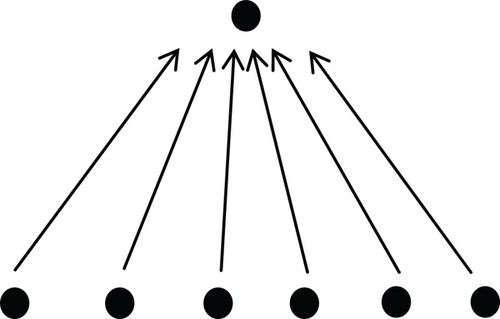
Figure 2 is an independent data processing method; each wireless sensor is independent in data acquisition and processing, without connecting to the network, and only transmits the processed data to the base station, which reduces the communication volume of transmitted data and reduces the energy consumption of wireless sensors through the CPU’s computing power. However, due to the autonomous nature of the network, there is no information sharing between nodes and spatial information is easily lost. Therefore, the method cannot be used for data fusion by multiple nodes to obtain the corresponding information as in the holistic mode model, thus limiting the development of English reading mode.
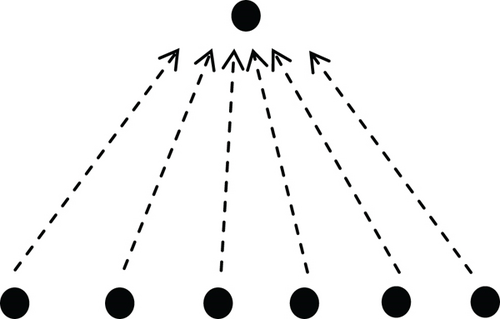
The data processing method of cooperative computing is a wireless networking method based on local recognition [22]. Low cost, small size, high functionality, and low power consumption are necessary to achieve high-density wireless sensors. Figure 3 shows a hierarchical, distributed network model for data processing for collaborative computing. This method effectively addresses the above-mentioned problems of centralized and independent data. In this network model, sensors are divided into multiple layers and data is fused through multiple nodes, reducing the amount of communication in the network, while also storing information from multiple nodes, thus solving the problem of integration of multiple nodes. The data processing method of collaborative computing is a current smart sensor network for structural modal parameter identification, which can be extended to densely arranged wireless sensor structures.
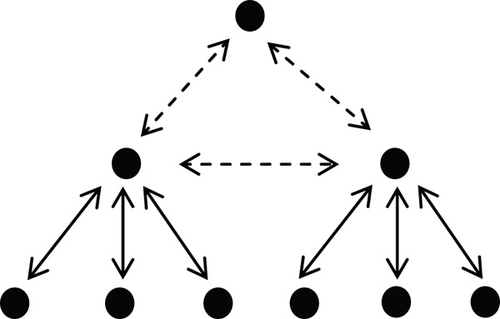
3. Design of the Application Methodology
3.1. Application Framework Design
The modalities in this designed intelligent sensor network-based English reading modal recognition system are mainly divided into semantic modalities and situational modalities, and the system mainly includes three modules: English reading article data collection, English article data semantic analysis, and English reading article situational picture feedback module [23]. This chapter first introduces the overall framework of the system and then provides a detailed description of the specific implementation process of each module in the system. The overall framework of the English reading modality recognition system based on intelligent sensor networks is shown in Figure 4.
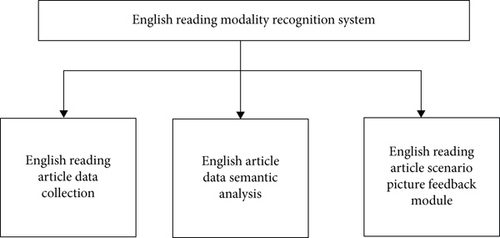
3.2. Application Data Acquisition
The data source of this application data input is mainly through the intelligent recognition of English articles and then use the sensor network for data acquisition and transmission; this module is mainly composed of digital-to-analogue converter chip TLC2543CN and analog-to-digital converter chip XD2543N. The working principle in this module is as follows: the data acquisition sensor is used to send out a data acquisition signal, and the data acquisition signal felt is transmitted to the ADC0832 conversion chip by converting it into a voltage signal, which is converted into a digital signal by A/D conversion and transmitted to the microcontroller, which converts the current collected data information according to the input signal. The circuit schematic is shown in Figure 5.
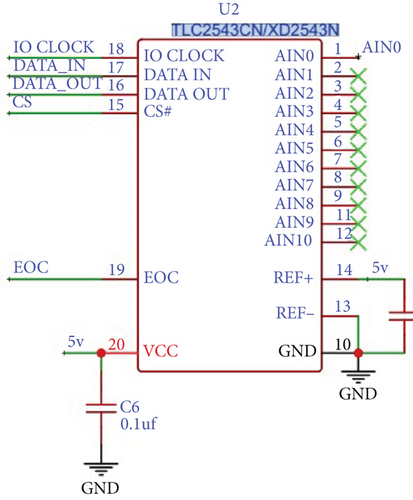
3.3. Applying Data Modal Semantic Parsing
Once the content read in English has been entered, it can be subjected to latent semantic analysis and fed back to the user. Latent semantic analysis techniques, being a statistically based technique, are inevitably constrained by the nonfinite nature of the data. Existing research results show that the use of latent semantic analysis techniques in large-scale data collections can be very demanding on hardware, which greatly limits its practical application. On this basis, a comprehensive concept of multiple systems and multiple layers is combined to provide an in-depth discussion of latent semantic analysis techniques. This section will start with the integration of two basic semantic space models. The basic idea of the approach is to build up classifiers from the two possible semantic analysis methods, classify different texts, and then score them according to the different classification systems. This fusion process can be represented in Figure 6.

3.4. Applying Data Modal Scenario Picture Feedback
People are able to construct knowledge through images. Whenever we see a thought or experience, our mind immediately presents it as such. Once again, our brains are constantly switching between sensory signals such as auditory and qualitative sensations and their visual representation. By semantic analysis of the text read in English, the corresponding pictures can be returned, so this time the application is designed with a module that uses the text in English to produce pictures so that the reader can better understand the text and get a better grasp of it. To address the traditional problems faced by the TTI model, this paper employs an increasingly popular technique of generating adversarial networks (GAN). GAN generally consists of two models.
- (1)
Generating the semantic layout: this phase contains elements such as class labels, boxes, and shapes of salient objects. This feature consists of two main parts: the box generator and the shape generator
- (2)
Generation of the final image: this feature is implemented by means of a multilayer image generator and a discriminator
The Obj-GAN model in Figure 7 provides a state-of-the-art architecture. The model takes a set of labels as input and encodes them into a word vector. The input then goes through three main steps: frame generation, shape generation, and image generation.
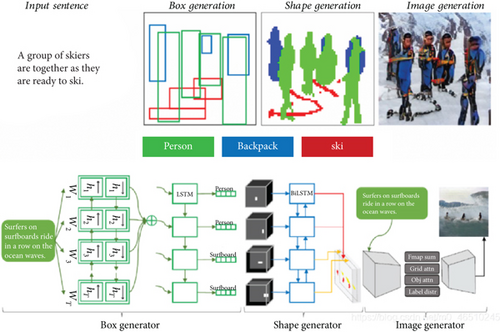
The first step in the Obj-GAN model is to take a sentence as an input and produce a semantic layout, i.e., a series of objects defined by its bounding boxes. The model’s boundary generator will produce a set of borders that will be used by the graph generator. Upon inputting a set of bounding boxes, this graphics generator will make predictions about the shape of the individual objects in the corresponding squares. The graphs generated by the graph generator are used by the GAN model.
4. Practical Experimental Analysis of the Application
4.1. Study Population
This study was conducted in a regional secondary school in senior classes 1 (43 students) and 2 (42 students). The curriculum was based on the compulsory education textbook English for Grade 9, revised in 2016 by Education Press, for Class 1 and Class 2, respectively. These two classes are one level classes; they have the same content and teaching content and the same teacher.
4.2. Research Tools
In this study, the results of the two tests were tallied and analysed using SPSS 17.0. Firstly, the test results of the two classes will be compared to determine if the two classes are a parallel class and if this experiment has been done. Then, based on the test results of the two classes, we will test the results of the experiment for one semester to see if their reading skills are better than the control group.
4.3. Analysis of the Results of the Research Practice
This study will run for one semester from February 2021 to July 2021. All students in the first and second year of senior year at a university were used in this study. The textbook used in both classes is the same, which is English Grade 9, revised by Education Press in 2016. In this study, the bottom-up traditional reading instruction was used as the experimental class with this system.
4.3.1. Data Collection and Analysis of the Pretest
The author used a reading test that he had written himself near the beginning of February, and the selection of the test questions followed the type of questions used in previous tests. The test was divided into two options (10 marks) and two tasks (20 marks), each worth 30 marks. The statistical results of the pretest scores of the control and experimental classes are shown in Table 1. The results of the independent sample t-test for the pretest scores of the control class and the experimental class are shown in Table 2.
| Classes | N | Average value | Standard deviation | Standard error of the mean | |
|---|---|---|---|---|---|
| Pretest | 1.00 | 43 | 21.2326 | 4.77013 | 0.72744 |
| 2.00 | 42 | 21.2619 | 4.45059 | 0.68674 |
| Levene’s test for variance equation | t-test for the mean equation | |||||||||
|---|---|---|---|---|---|---|---|---|---|---|
| 95% confidence interval of the difference | ||||||||||
| F | Sig. | t | df | Sig bilateral | Mean difference | Standard error values | Lower limit | Upper limit | ||
| Pretest | Assuming equal variances | 0.267 | 0.607 |
|
|
|
|
|
|
|
| Assuming unequal variances | ||||||||||
Table 2 shows that the mean value of the control class is 21.2326 and the mean value of the experimental class is 21.2619, which are similar. The Levene chi-square test showed that the Sig value was 0.607 > 0.05, indicating that the overall distribution of the two groups was normal with equal variance. The results of the t-test showed that P = 0.977 > 0.05, indicating that the difference in reading level between the control class and the experimental class was not significant, and therefore, these two classes could be used as subjects for the experiment.
4.3.2. Data Collection and Analysis of the Posttest
At the end of the semester, the authors chose the reading section of the final test as the posttest question. The questions on this final test were essentially the same as the pretest questions, consisting of two option-based (10) and two tasks (20). After the test was completed, the following analysis of the test data was carried out using SPSS. The statistical results of the posttest scores for the control and experimental classes are shown in Table 3.
| Classes | N | Average value | Standard deviation | ||
|---|---|---|---|---|---|
| Posttest | 1.00 | 43 | 21.9070 | 4.81473 | 0.73424 |
| 2.00 | 42 | 23.8810 | 4.04368 | 0.62395 |
The data shows that the average score on the posttest in the control class was 21.9070, while in the laboratory class it was 23.8810. Over the course of the semester, both classes showed a significant increase in performance, but this could also be due to the overall lower level of difficulty. The average score of the experimental class increased by 2.6191 through the two classes, while the control group’s score increased by only 0.6744 compared to 1.974 in the experimental class, which shows that the method has a great advantage in improving students’ academic performance. The results of the t-test were P = 0.044 < 0.05, indicating that there was a significant difference in the posttest scores between the two classes, with the experimental class being significantly higher than the control group. The experimental results show that reading using intelligent sensing networks in English pattern recognition is better than traditional type of reading and has good value for promotion, as shown in Table 4.
| Levene’s test for variance equation | t-test for the mean equation | |||||||||
|---|---|---|---|---|---|---|---|---|---|---|
| 95% confidence interval of the difference | ||||||||||
| F | Sig. | t | df | Sig bilateral | Mean difference | Standard error values | Lower limit | Upper limit | ||
| Posttest | Assuming equal variances | 0.212 | 0.646 | -2.044 | 83 | 0.044 | -1.97398 | 0.96553 | -3.89438 | -0.05357 |
| Assuming unequal variances | -2.049 | 81.190 | 0.044 | -1.97398 | 0.96355 | -3.89107 | -0.05689 | |||
5. Conclusion
Reading is the main way for people to obtain information, and reading comprehension is a way for students to use language in an integrated way. In current English tests, reading comprehension takes up a large proportion of the test and is the highest scoring category in all papers, usually 3-5, while in the type of test questions, in addition to multiple-choice questions, there are also some task-based reading, and reading is also the easiest category to lose marks, so some people jokingly say, “it takes a reader to get a high score,” because students’ reading ability can have a direct impact on their test scores. However, in English classroom teaching, there is still an excessive focus on the text, with teachers going over and over, carefully, and sometimes making students memorise it. This consolidates students’ knowledge but also kills their enthusiasm for reading, causing them to fail to keep up with the volume and speed of their reading, so it is important to find a more appropriate way to improve their reading skills in English. The application of English reading modality recognition based on intelligent sensor networks explored in the article is shown to be extensible in practical research, and its practical results are demonstrated by data that demonstrate the developability of the technology.
Conflicts of Interest
The authors declared that they have no conflicts of interest regarding this work.
Open Research
Data Availability
The dataset used in this paper is available from the corresponding author upon request.




